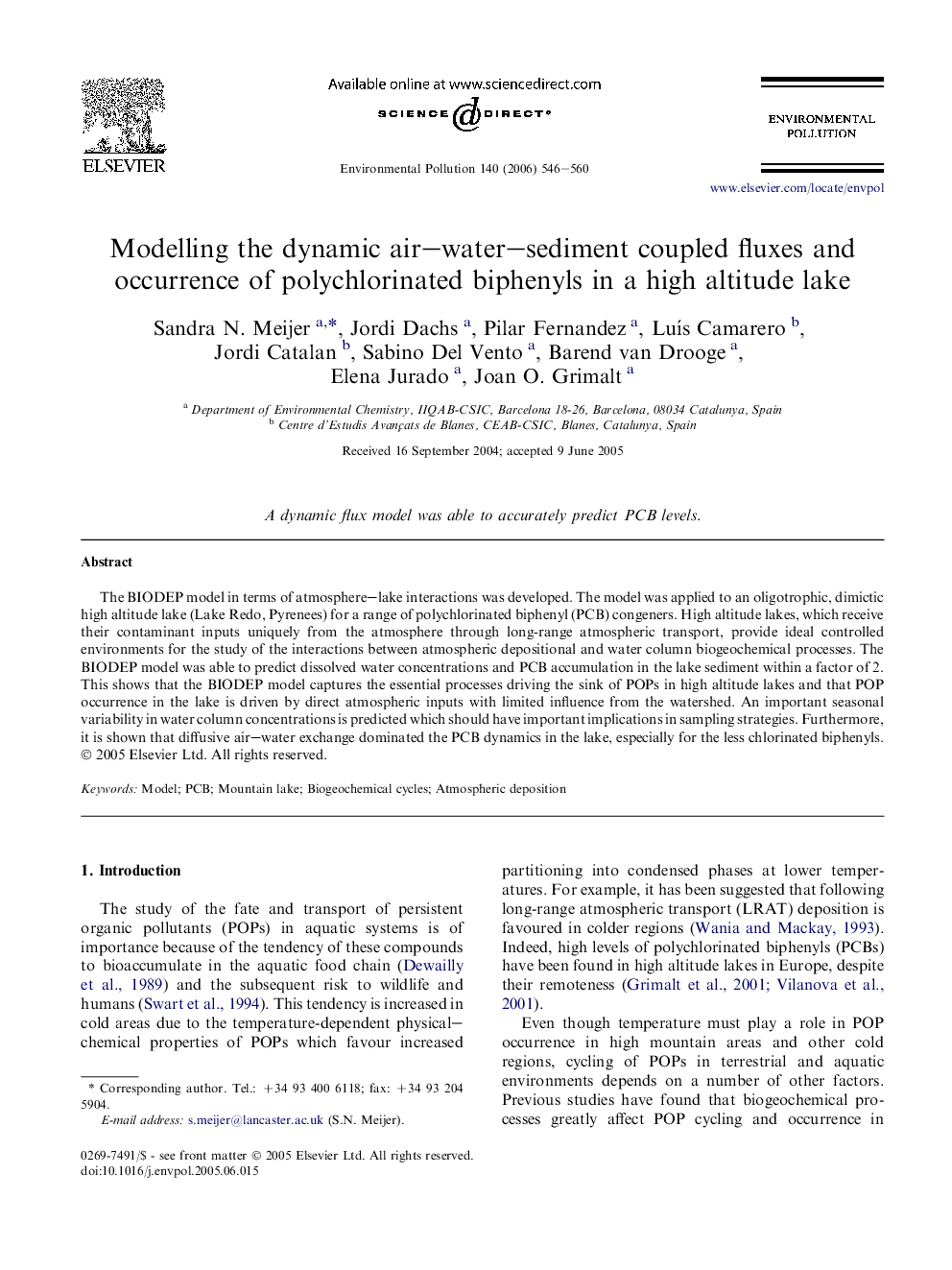| Article ID | Journal | Published Year | Pages | File Type |
|---|---|---|---|---|
| 4427486 | Environmental Pollution | 2006 | 15 Pages |
The BIODEP model in terms of atmosphere–lake interactions was developed. The model was applied to an oligotrophic, dimictic high altitude lake (Lake Redo, Pyrenees) for a range of polychlorinated biphenyl (PCB) congeners. High altitude lakes, which receive their contaminant inputs uniquely from the atmosphere through long-range atmospheric transport, provide ideal controlled environments for the study of the interactions between atmospheric depositional and water column biogeochemical processes. The BIODEP model was able to predict dissolved water concentrations and PCB accumulation in the lake sediment within a factor of 2. This shows that the BIODEP model captures the essential processes driving the sink of POPs in high altitude lakes and that POP occurrence in the lake is driven by direct atmospheric inputs with limited influence from the watershed. An important seasonal variability in water column concentrations is predicted which should have important implications in sampling strategies. Furthermore, it is shown that diffusive air–water exchange dominated the PCB dynamics in the lake, especially for the less chlorinated biphenyls.
